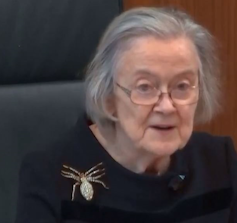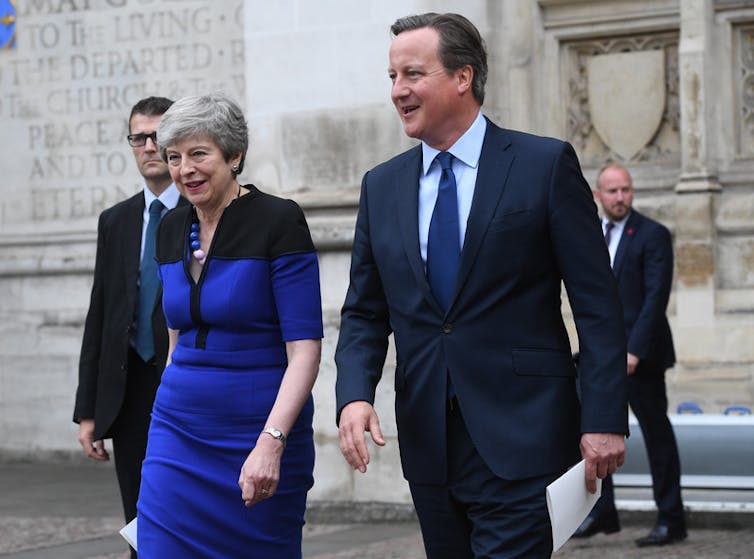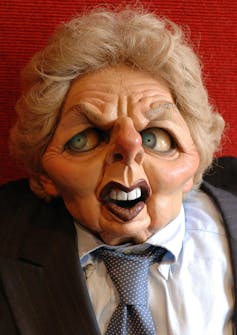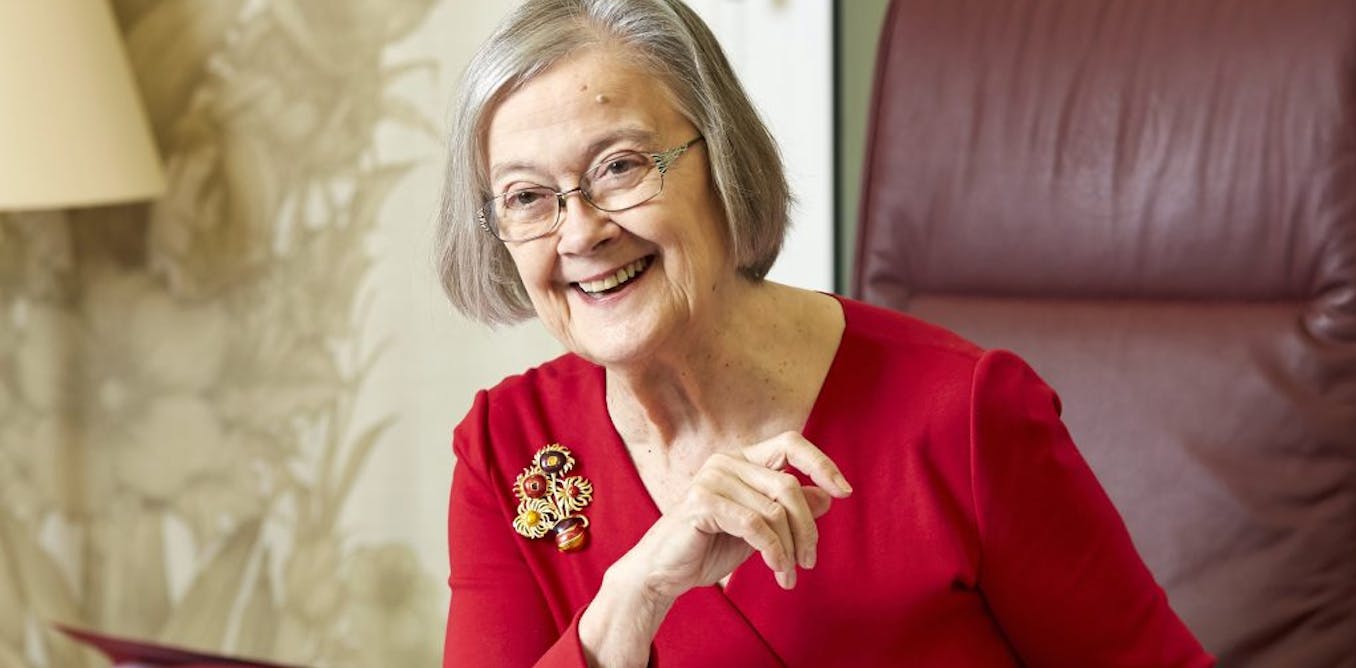Lady Hale’s spider shows key to women’s power dressing is in the accessories
Lady Brenda Hale, the president of the UK’s Supreme Court, recently delivered the judgment that the prime minister, Boris Johnson, had acted unlawfully when he prorogued parliament. In doing so she unwittingly became the centre of a discussion over power dressing and women’s use of accessories.
After the judgment, the large diamond spider-shaped brooch that Lady Hale wore as an accessory to her clothing – one, it seems of a large collection that the Supreme Court president is known for wearing – became a focus of attention. Scarlett Conlon wrote in The Guardian: “The spider brooch Lady Hale was wearing as she declared Boris Johnson’s prorogation of parliament ‘void and of no effect’ has become a fashion phenomenon, with fans of the baroness immediately seeking to imitate her.”

EPA-EFE/UK Supreme Court
Such was the effect of this accessory that a spider t-shirt rapidly designed to cash in on the interest sold out in days. The manufacturers reportedly donated £18,000 to Shelter from the proceeds. Spider emojis have been popping up next to profiles all over social media.
My research has examined the way in which men’s clothing, in particular tailored suits, can elevate the status of a man. In contrast, there is no similar item of clothing that demonstrates women’s power in the same way. So I suggest that much can be learned from Lady Hale’s accessories as a means by which power and authority can be demonstrated.
Power dressing
People have always dressed to convey power. The history books are full of kings and queens who wore expensive and elaborate robes and crowns in order to physically differentiate themselves from the masses. The crown itself, obviously, has always been the ultimate in power accessories.
Queen Elizabeth II only wears her crowns on special occasions, but she is known for her collection of brooches. Royal watchers were quick to point out that when hosting the US president, Donald Trump, and the first lady, Melania, on a state visit in 2018, the Queen wore a brooch given to her by Trump’s predecessor Barack Obama and the first lady Michelle.
Clothing is symbolic of many things, such as sex, gender and power. When it comes to “power dressing” for men, the suit and tie is the most recognised sign of status. The suit looks undone without a tie, therefore the tie itself might be regarded as a requirement rather than an accessory.

EPA-EFE/Facundo Arrizabalaga
We have come to associate powerful figures with “men in suits”. Sociologist Tim Edwards suggests that “the suit still maketh the man most completely. It remains a potent symbol of success, virility and maturity, and the one ensemble from a man’s wardrobe that still looks incongruous on a boy.”
In contrast to Edwards, in my research on the power projected by men in suits, I suggest that young boys in trousers suits actually look like “men in waiting”, and that the suit helps them to adopt the mannerisms of male power. Whereas women in trousers suits struggle to demonstrate power in the same way for following reasons.
First, trouser suits are rarely cut to fit women’s bodies properly, so they often fit badly, which is also true of many clothes for women. Second, when women wear trouser suits – as demonstrated by former first lady and secretary of state, Hillary Clinton – they often look to be imitating men and the power that comes with the male suit, rather than demonstrating themselves as women in power.
In the run up to the 2016 US presidential election, Clinton’s choice of a pantsuit was a major topic of discussion, sometimes threatening to obscure the policy debates she would have preferred.
Fighting objectification
Feminist author Sandra Bartky has argued that women are constantly subject to objectification which means that they are valued much more for how they look rather than what they can do. So how do women project power through their clothes?
According to historian Ariel Beaujort, in the past “accessories helped women show off their position as feminine; in the Victorian period this meant creating a pronounced gender difference between men and women”.
Margaret Thatcher, the UK’s first women prime minister, seldom made any attempt to dress in a masculine manner – always wearing skirt suits, dresses and blazers (although the satirical 1980s puppet show Spitting Image often portrayed her in a suit and tie).

John Stillwell/PA Archive/PA Images
She didn’t give up her femininity when she came into power, but amplified her image as a powerful woman by complementing her clothing with eye-catching accessorises, such as necklaces and large brooches. Thatcher knew the importance of a well chosen accessory, and as she always wore them, accessories became a way of demonstrating feminine power.
Now there are considerably more women in positions of power than in Thatcher’s time. Yet, women in powerful positions are still subject to commentary regarding what they wear. So while Lady Hale’s judgment was a seriously important constitutional issue, especially in the current febrile political atmosphere, it was significant that there was so much discussion of her accessories.
Lady Hale’s spider brooch gave headline writers the chance to have a bit of fun – and the chance to compose puns around spinning webs.
But the importance of Lady Hale’s judgment was not obscured by the discussion of her choice of accessories. Instead, she is continuing the legacy of other powerful women, such as Thatcher, for whom their accessorising comes laden with meaning beyond simply appearance. So, unlike many items of women’s clothing which are apparently fraught with implications of sexual objectification, a well chosen large accessory can add to – rather than remove – power.
